Virology & Mycology
Open Access
ISSN: 2161-0517
ISSN: 2161-0517
Short Communication - (2021)Volume 10, Issue 5
Asparagus is famous for its culinary and medicinal uses. Although it is a native to the western European coasts, it has now been widely naturalized in India; Himachal Pradesh is the primary producer. Organic farming is an agricultural system that uses fertilizers of organic origin such as compost manure, green manure (Neem kernel). There are three plant diseases that affect the Asparagus plant which can be controlled by the spray of NSKE (Neem Seed Kernel Extract).
Asparagus; NSKE; Crown rot disease; Spray; Rust disease; White mold
Organic farming is an agricultural system that uses fertilizers of organic origin such as compost manure, green manure (Neem kernel). It originated early in the 20th century in reaction to rapidly changing farming practices.
The concepts of organic agriculture were developed in the early 1900s by Sir Albert Howard, F.H. King and Rudolf Steiner who believed that the use of animal manures (often made into compost), cover crops, crop rotation, and biologically based pest controls resulted in a better farming system.
Howard, having worked in India as an agricultural researcher, gained much inspiration from the traditional and sustainable farming practices he encountered there and advocated for their adoption in the West [1].
Asparagus is famous for its culinary and medicinal uses. Although it is a native to the western European coasts, it has now been widely naturalized in India; Himachal Pradesh is the primary producer.
As the vegetable not commonly available in the local markets, it remains in high demand [2].
There are three plant diseases that affect the Asparagus plant a) Crown and root rot of asparagus, caused by two species of Fusarium(Fusarium oxysporum f.sp. asparagi Fusarium proliferatum) (Figure 1).
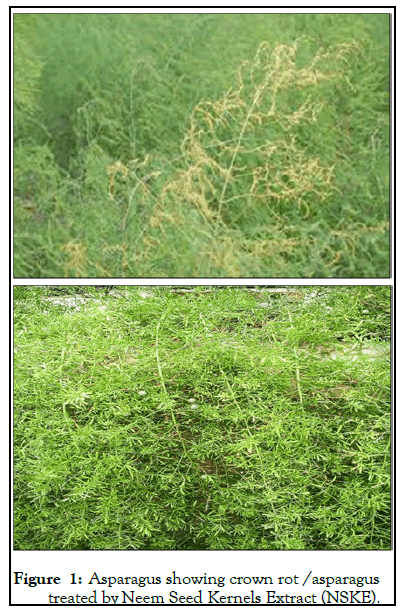
Figure 1: Asparagus showing crown rot /asparagus treated by Neem Seed Kernels Extract (NSKE).
b) Asparagus rust, caused by Puccinia asparagi, is an extremely complex fungal disease that threatens crops throughout the world (Figure 2).
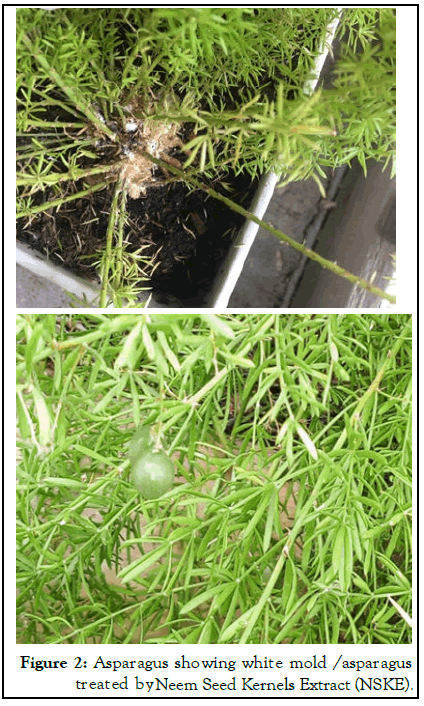
Figure 2: Asparagus showing white mold /asparagus treated by Neem Seed Kernels Extract (NSKE).
c) White mold infests Asparagus infected by Sclerotinia sclerotiorum (Figure 3).
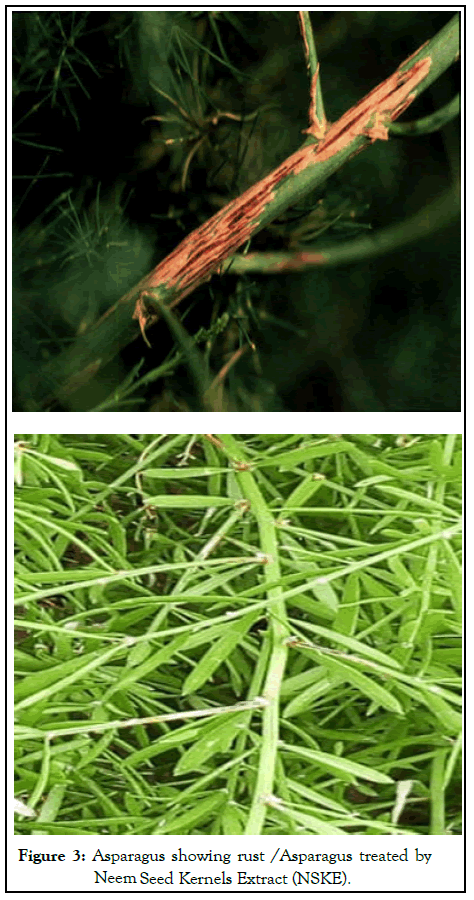
Figure 3: Asparagus showing rust /Asparagus treated by Neem Seed Kernels Extract (NSKE).
The control measures involve treatment of the seeds with hot water or disinfectants to produce disease-free seedlings.
The plant vigor is maintained by proper fertilization and proper weeding.
Management of Fusarium crown and root rot is difficult as the plant propagates from both seeds and crowns. But to grow from crowns would take around three years, and to grow the plants from roots, it takes two years only. Usage of fungicide is of little value as it is less effective.
Neem plant
Azadirachta indica and A. Juss (Meliaceae) commonly known as Neem or vembu in Tamil, nimba in Hindi in India (Figure 4). The plant is widely distributed throughout India. Plant was collected from college campus, Guru Nanak College, Chennai, and identified, authenticated by CSMDRIA, Chennai where a voucher specimen is maintained. A Neem tree normally begins bearing fruit after 3-5 years, and fully productive in 10 years, later can produce up to 50 kg of fruits annually. Fruit is a smooth, ellipsoidal drupe, up to almost 2 cm long. When ripe, it is yellow or greenish yellow and comprises a sweet pulp enclosing a seed. The seed is composed of a shell and a kernel (sometimes two or three kernels), each about half of the seed's weight (Figure 5). It is the kernel that is used most in pest control.
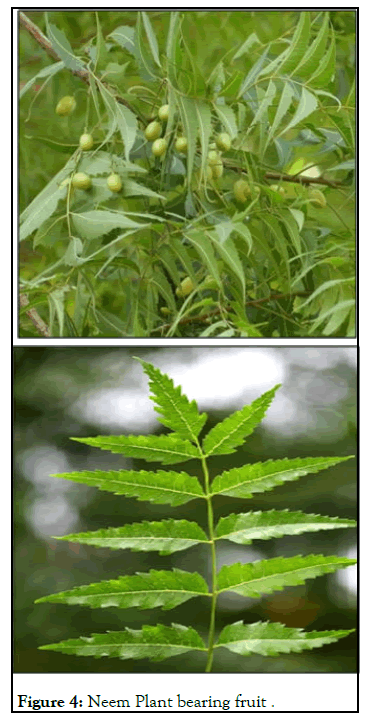
Figure 4: Neem Plant bearing fruit.
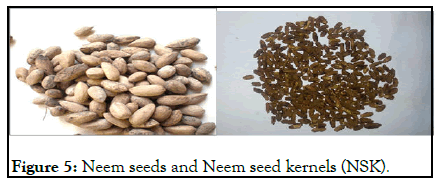
Figure 5: Neem seeds and Neem seed kernels (NSK).
Preparation of neem kernel extract
5 kilogram of the kernel is pounded in a mortar and pestle and soaked in10 liters of distilled water for one day. After 24 hours the solution becomes milky white then detergent soap from Khadi 200g is added stirred with a wooden Planck. Filter through double layer of muslin cloth and make the volume to 100 liter. Finally filtered and stored for further use. The shelf life of this Neem Kernel Extract is one week or seven days (Figure 6).The precautions are the Neem fruits are collected during bearing season and shade dried, the seeds over eight months of age are not used. The seeds stored over and above this age lose their activity and hence not fit for NSKE preparation. Always use freshly prepared Neem seed kernel extract (NSKE).The solution is sprayed after 3.30 pm to get effective results [4].
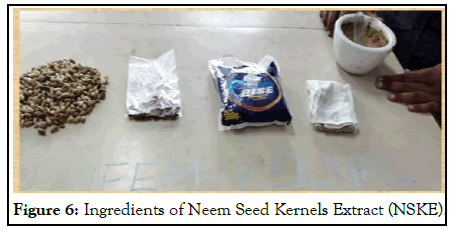
Figure 6: Ingredients of Neem Seed Kernels Extract (NSKE).
Extract preparation
NSKE was stirred with the solvent water, 2:1 v/v.
Experimental plant Asparagus racemosus wild
Asparagus commonly called as sparrow grass, scientific name Asparagus officinalis, Asparagaceae is a perennial flowering plant, young shoots are used as a spring vegetable grows upto 100-150 cm tall, [3] with stout stems with much-branched, feathery foliage. The "leaves" are needle-like cladodes. The root system, often referred to as a "crown," is adventitious and the root type is fasciculated. The flowers are bell-shaped, greenishwhite to yellowish, it is usually dioecious, with male and female flowers on separate plants, but sometimes hermaphrodite flowers are found. The fruit is a small red berry 6-10 mm in diameter, which is toxic to humans (Figure 7).
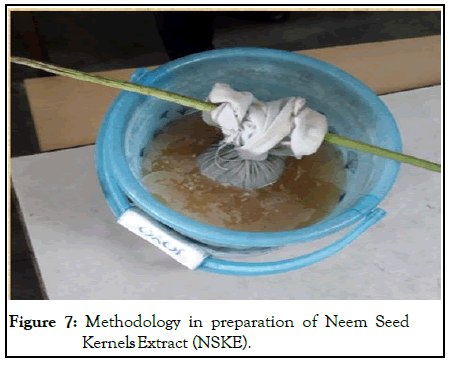
Figure 7: Methodology in preparation of Neem Seed Kernels Extract (NSKE).
Application method
It is applied as a foliar spray on the plant. Various concentrations such as 1, 10, 100, 1000 μg/L with the stock solution having NSKE: water, 2:1 v/v
The spray of NSKE on Asparagus at time intervals of 24 hours, 48 hours and 72 hours showed effective results. The results are shown in Tables 1A-1C.
| S.No | Name of the disease | Concentration of the extract(NSKE) µL | Time interval | Serial number |
|---|---|---|---|---|
| 1 | Asparagus crown and root rot | 100 | 24 | 85 |
| 1000 | 24 | 100 | ||
| 100 | 48 | 90 | ||
| 1000 | 48 | 100 | ||
| 100 | 72 | 98 | ||
| 1000 | 72 | 100 |
Table 1A : Efficacy of NSKE on Asparagus plant.
| S.No | Name of the disease | Concentration of the extract(NSKE) µL | Time interval | Serial number |
|---|---|---|---|---|
| 1 | Asparagus rust | 100 | 24 | 100 |
| 1000 | 24 | 100 | ||
| 100 | 48 | 100 | ||
| 1000 | 48 | 100 | ||
| 100 | 72 | 100 | ||
| 1000 | 72 | 100 |
Table 1B: Efficacy of NSKE on Asparagus plant.
| S.No | Name of the disease | Concentration of the extract(NSKE) µL | Time interval | Serial number |
|---|---|---|---|---|
| 1 | White mold of asparagus | 100 | 24 | 95 |
| 1000 | 24 | 100 | ||
| 100 | 48 | 100 | ||
| 1000 | 48 | 100 | ||
| 100 | 72 | 100 | ||
| 1000 | 72 | 100 |
Table 1C: Efficacy of NSKE on Asparagus plant.
All the three diseases infecting the plant were controlled by the Neem seed kernel extract within 24 hours interval and at 10μL.Hence the efficacy of Neem seed kernel extract on the Asparagus Racemosus Wild is effective on fungus. So Asparagus is famous for its culinary and medicinal uses.
Citation: Sethi P (2021) Efficacy of NSKE (Neem Seed Kernel Extract) on Asparagus racemosus Wild. Virol Myco.10:220.
Received: 30-Sep-2021 Accepted: 14-Oct-2021 Published: 14-Oct-2021 , DOI: 10.35248/2161-0517.21.10.220
Copyright: © 2021 Sethi P. This is an open-access article distributed under the terms of the Creative Commons Attribution License, which permits unrestricted use, distribution, and reproduction in any medium, provided the original author and source are credited.